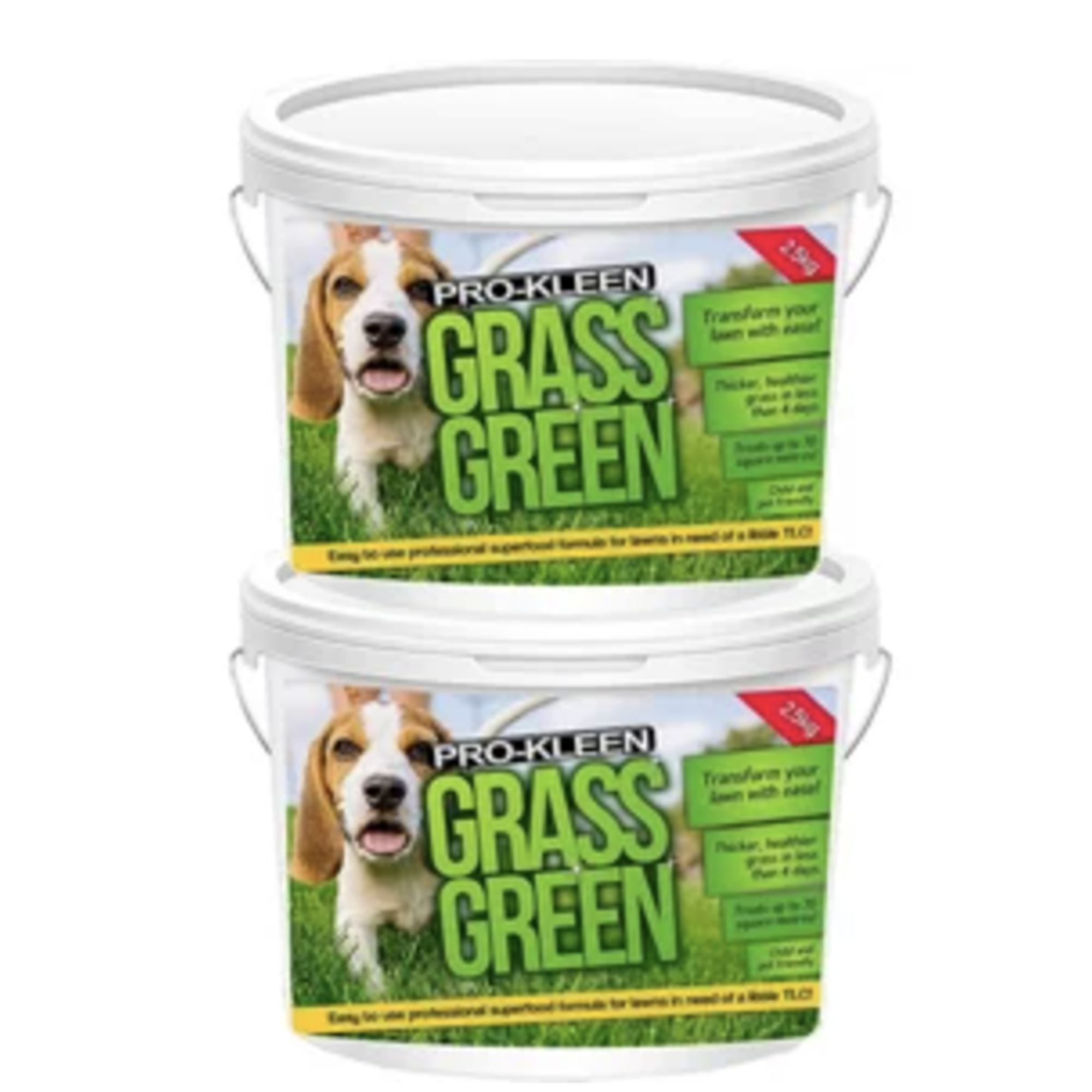How to fertilise a lawn — experts reveal the best method for perfect grass
Give your lawn a feed to boost the health and vibrancy of your grass this year

Knowing how to fertilise a lawn could be the difference between a healthy thriving lawn, and a yellowing, sickly affair.
Though it's important to note that there are many factors at play when it comes to the success of our lawn ideas, fertiliser can certainly play a factor when it comes to boosting vibrancy and thickness.
In this article, with the help of two lawn care experts, we cover how to prep your lawn for fertiliser, how and when to apply it, what the best fertiliser options are and how often you need to feed your lawn for optimum results.
How to fertilise a lawn step-by-step
Fiona Jenkins, gardening expert from MyJobQuote explains that you should always mow a lawn before you apply fertiliser. This means that the nutrients will have time to absorb before you next cut your grass.
She outlines the steps on how to fertilise a lawn, including the vital prep stages:
1. Prepare your lawn for fertiliser
"For spring and autumn fertilising, it’s a good idea to do your seasonal lawn maintenance first. So, once you've mown, scarify the lawn to remove thatch and get rid of moss and aerate the lawn by spiking it with holes," explains Fiona Jenkins.
"This will ensure that your feed can reach into the ground. Unless you use an all-in-one type of lawn care product, such as a weed and feed, you should pick out the weeds too – otherwise, you’ll be feeding those with your fertiliser. "
Bring your dream home to life with expert advice, how to guides and design inspiration. Sign up for our newsletter and get two free tickets to a Homebuilding & Renovating Show near you.

A landscaper and gardening expert with over 25 years of experience in the industry. Currently she works for MyJobQuote as their resident expert on all things gardening. She is highly knowledgeable and her expertise have featured in many reputable publications.
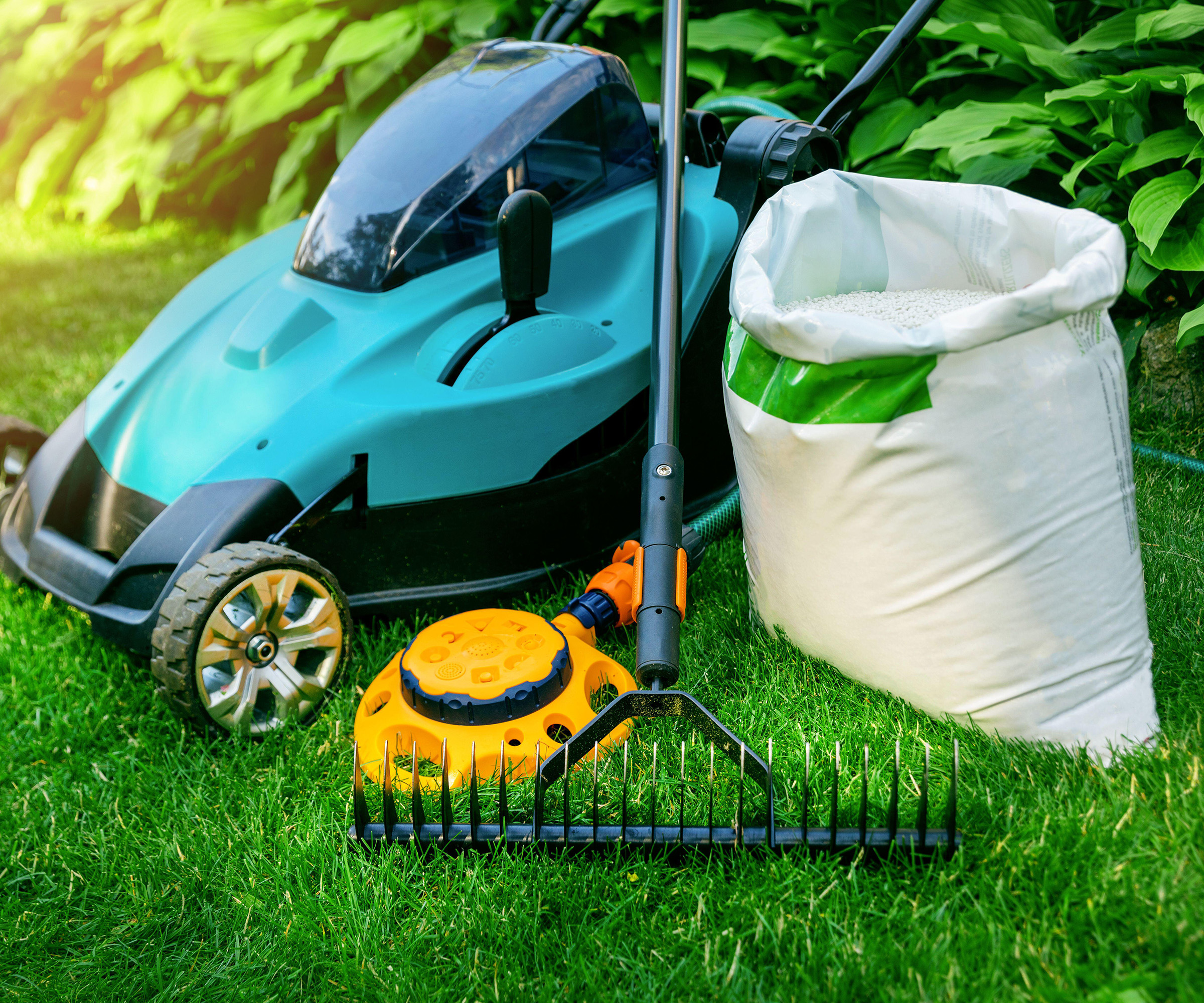
Shop lawn fertiliser
2. Mark out your area
"Pop on some protective gloves and check the application instructions on the fertiliser packet. If you are applying fertiliser by hand then it’s best to mark a grid out on your lawn, so you can be sure you’re applying the right amount of fertiliser per square metre," says Fiona.
It's important to note that applying fertiliser to dry, hard ground is fruitless because it won't soak into the soil properly. So make sure that your lawn is moist, but not waterlogged before applying your fertiliser.
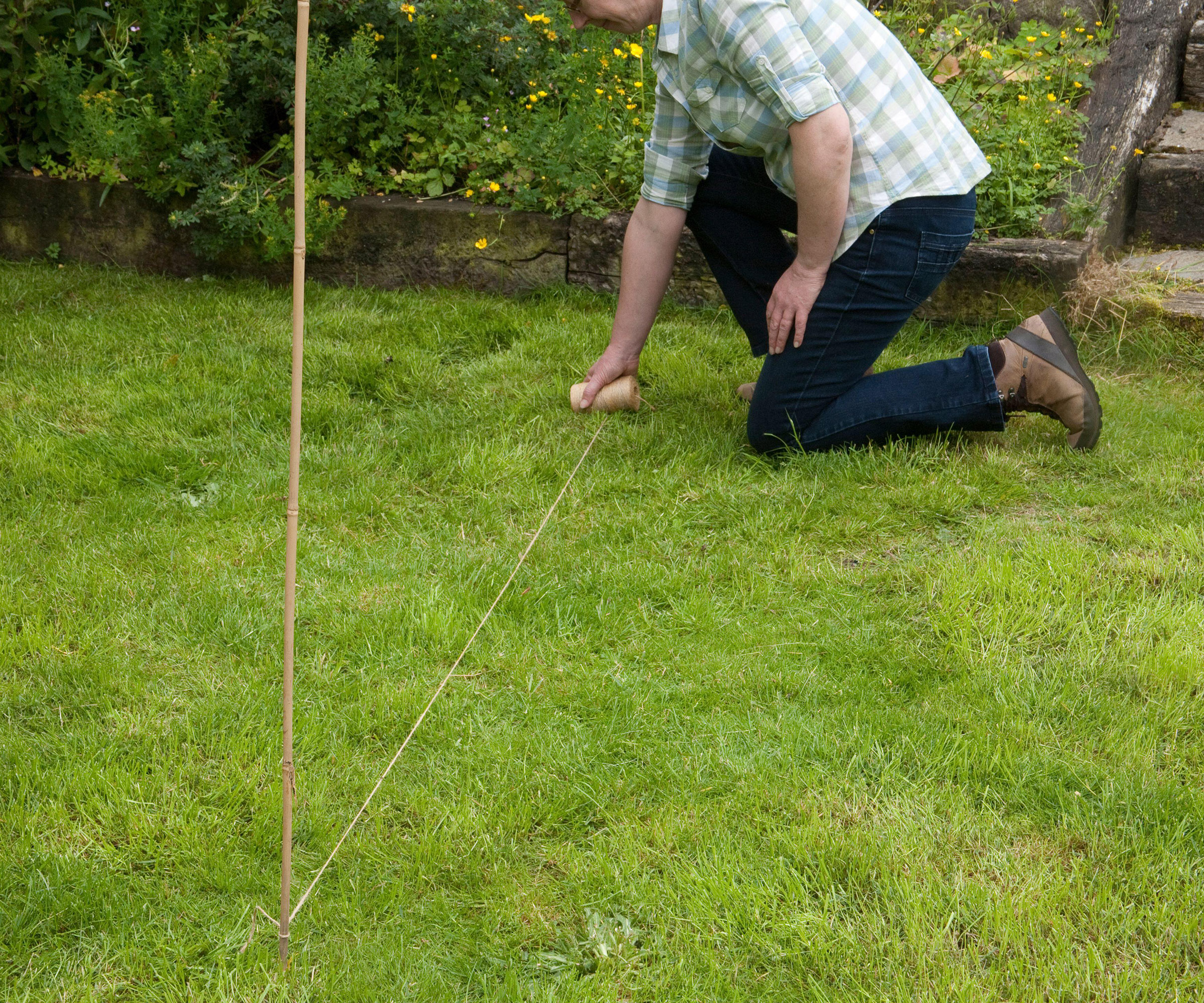
3. Apply your feed
"For liquid fertilisers, you’ll need to add the correct quantity to your watering can. If you’re using granules, fill your spreader as per the dosage instructions on the packet. Basing the amount on the size of your marked area," explains Fiona.
"After application, you’ll usually need to water your lawn to help the fertiliser soak in. Once you’ve done this, put your leftover fertiliser safely away and then take off your gloves and wash your hands."

Types of lawn fertliser
You can get both liquid and granular lawn fertilisers which work at different speeds. Fiona Jenkins highlights that you should also pay attention to the ingredients and labelling of lawn fertilisers. This is because spring and autumn feeds will contain different levels of nitrogen, potassium and phosphorous.
"Using a granular fertiliser and spreader is an easy way to get an even covering over your lawn. Granular feeds tend to be slow-release, so your lawn will keep feeling the benefit over the following months. However, liquid feed is a good option if you want to achieve faster results. It can also be applied with just a watering can, so it saves you from needing to buy special equipment," says Fiona.
"Organic fertilisers tend to be made up of animal and plant matter but can be slower to work than chemical or mineral versions. If you’re cultivating a wildlife-friendly garden or have a lawn that’s used by children and pets, then you might want to go for an organic type of fertiliser rather than a chemical or mineral one," says Fiona.
If you have patches you will also need to overseed your lawn as well as using fertiliser.
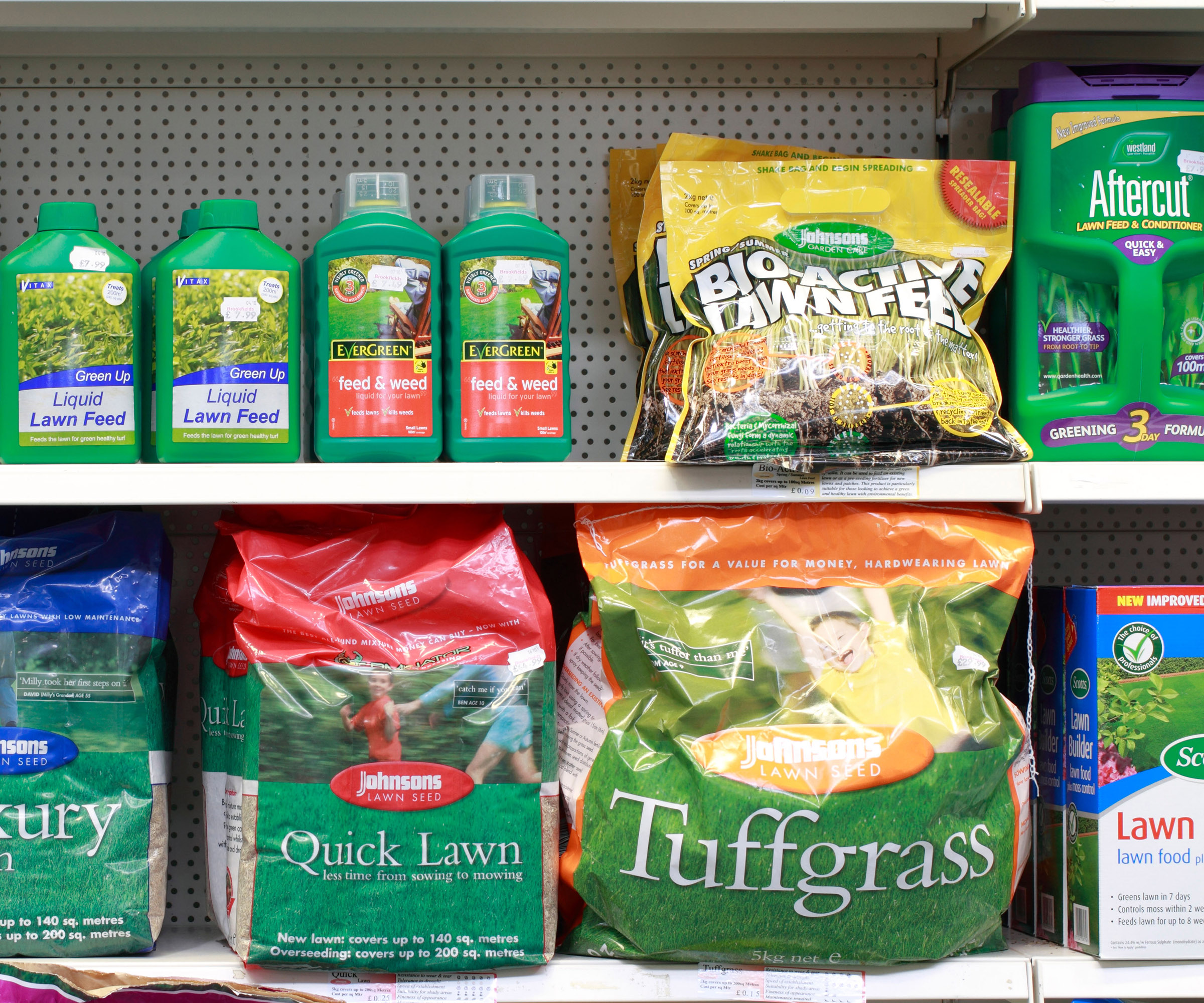
When to fertilise a lawn
"You should fertilise your lawn when the grass begins to grow actively, through the months of March to October," says Tom Clifford, garden expert at Gardenstone.
"Fertilise your lawn at the start of spring when the temperature reaches roughly 8 to 10 degrees, then fertilise again at the beginning of autumn to support the grass throughout the dormant seasons. I also recommend fertilising again mid-summer in July time, this is an optional choice but it will help to give your lawn a quick boost," says Tom.
He urges that it is important not to fertilise your lawn before rain as it can wash away the fertiliser before it can take effect and your lawn will not absorb the nutrients.
"I recommend always checking the weather forecast to ensure that it will not rain after fertilising," says Tom.
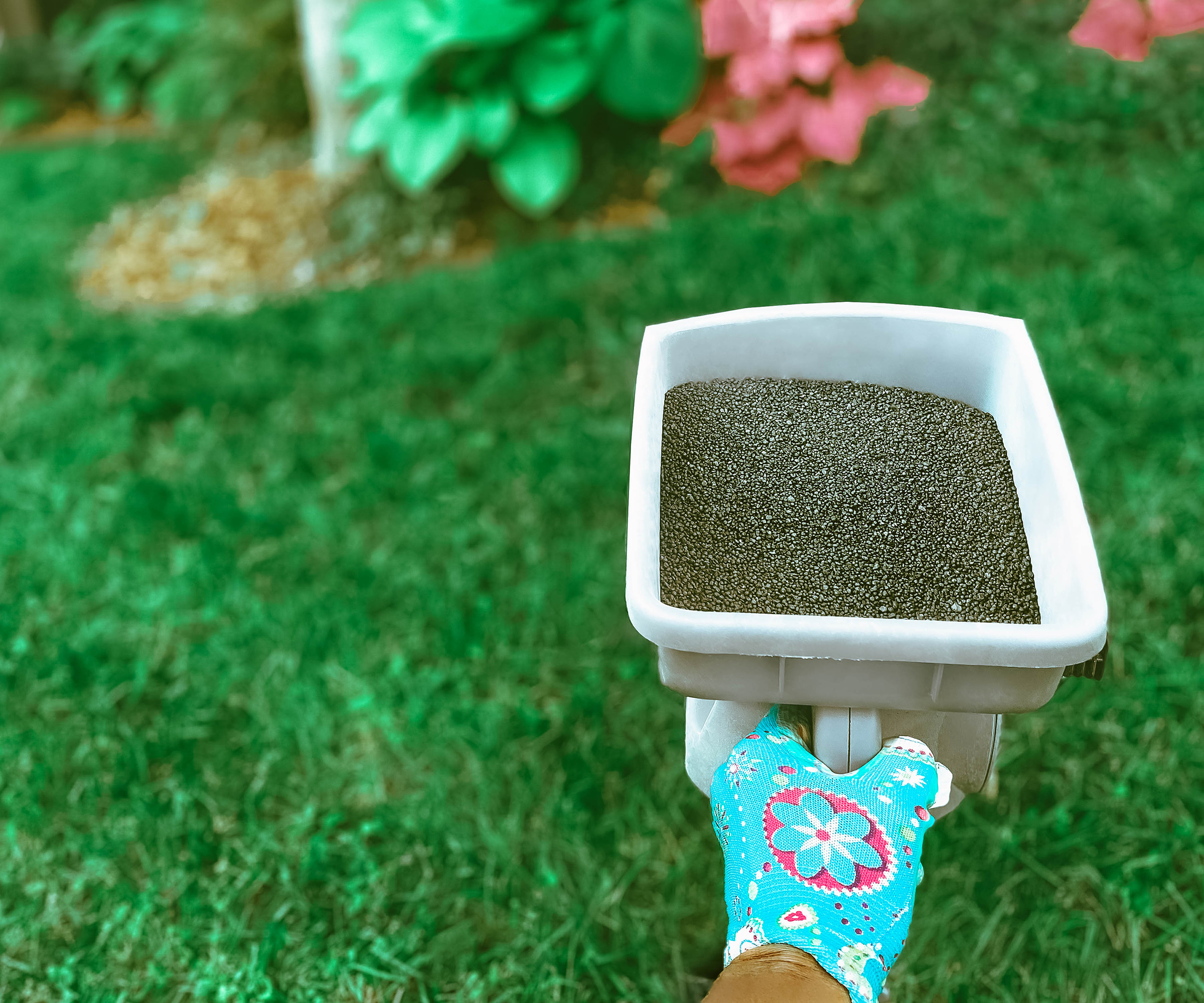
FAQs
How often should you fertilise a lawn?
"It is best to fertilise your lawn a minimum of two times per year, once in early spring and another time at the beginning of autumn. Of course, it is recommended that you also fertilise your lawn mid-summer to keep your lawn topped up, but this is not essential," says Tom Clifford, garden expert at Gardenstone.
The healthier and more established your lawn gets, the more drought-tolerant the grass will become making it easier to look after. Look at our guide for low-maintenance garden ideas.

Teresa was part of a team that launched Easy Gardens in 2018 and worked as the Editor on this magazine. She has extensive experience writing and editing content on gardens and landscaping on brands such as Homes & Gardens, Country Homes & Interiors and Living Etc magazine. She has developed close working relationships with top landscape architects and leading industry experts, and has been exposed to an array of rich content and expertise.
In 2020 Teresa bought her first home. She and her partner worked alongside architects and builders to transform the downstairs area of her two bedroom Victorian house in north London into a usable space for her family. Along the way she learned the stresses, woes and joys of home renovation, and is now looking to her next project, landscaping the back garden.

